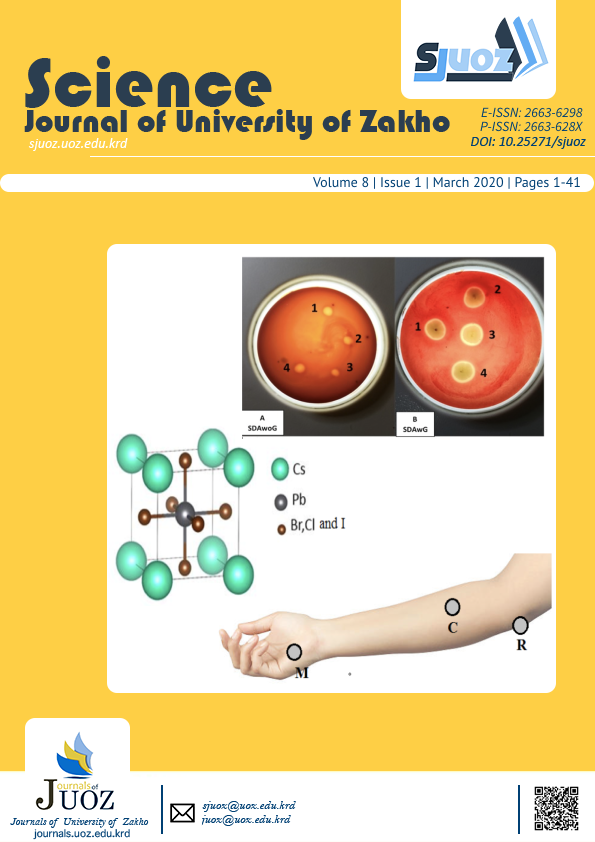Molecular Identification and Hemolytic Activity of Candida Species Isolated from Urine of Healthy and Diabetic Women in Kurdistan of Iraq
Abstract
A survey was carried out on the incidence of Candida yeasts in urine of healthy (non-diabetic) and diabetic women in Duhok and Zakho cities from February 2019 to April 2019. Out of 620 urine samples examined, 144 samples were found positive for Candida infection (23.2%). There were significant differences in incidence of Candida infection between urine of healthy and diabetic women as well as among age groups. All Candida isolates from positive samples were identified by using Chromogenic Candida Agar medium and confirmed by sequencing of the ITS1 and ITS4 region of rDNA. The identified Candida species were C.albicans, C.glabrata, C.krusei and C.tropicalis. The most common species was C.albicans (34%), followed by C.glabrata (29.9%), then C.tropicalis (13.8%), whereas, C.krusei (=Pichia kudriavzevii) displayed the least incidence (9.7%). All tested strains (n=83) for their hemolytic activity on Sabouraud's dextrose agar amended with sheep blood and glucose showed positive activity. Candida albicans and C.tropicalis displayed the highest hemolytic activity.
Full text article
Authors
Copyright (c) 2020 Zinah S. Oufi, Ahmed B. Mohammed, Samir Kh. Abdullah

This work is licensed under a Creative Commons Attribution 4.0 International License.
Authors who publish with this journal agree to the following terms:
- Authors retain copyright and grant the journal right of first publication with the work simultaneously licensed under a Creative Commons Attribution License [CC BY-NC-SA 4.0] that allows others to share the work with an acknowledgment of the work's authorship and initial publication in this journal.
- Authors are able to enter into separate, additional contractual arrangements for the non-exclusive distribution of the journal's published version of the work, with an acknowledgment of its initial publication in this journal.
- Authors are permitted and encouraged to post their work online.
